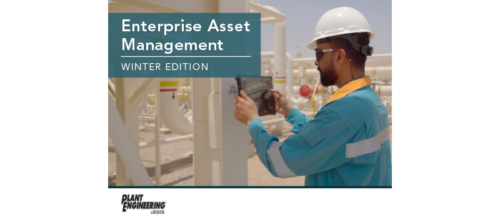Building the ultimate CMMS team: A step-by-step guide
A top-notch CMMS can often help with every aspect of maintenance, ranging from core functionalities like asset management and preventive maintenance to professional services like consulting and training.
There’s no shortage of ways that your business can benefit from implementing a computerized maintenance management system (CMMS) to better manage your maintenance processes. A top-notch CMMS can often help with every aspect of maintenance, ranging from core functionalities like asset management and preventive maintenance to professional services like consulting and training.
There’s a lot more to it than simply purchasing a CMMS and hitting the ground running, though. If you really want to achieve success with a new system, you’ve got to have a capable team of people on your side. It’s not just a maintenance manager and a couple of other employees-really, what you need is to have your entire staff helping in the process.
Smartware Group’s Jumpstart Consulting team knows all about this. These consultants are in the business of successfully assisting organizations through the implementation process, and the way they see it, it’s best to have a "dream team" of employees who all contribute in different ways.
The ideal situation for a CMMS implementation is when everyone fulfills their roles sufficiently—with some directly involved, and others offering support at various stages in the process.
Below is a rundown of everyone you should have involved when getting a new CMMS off the ground.
Executive management
At the top of the corporate totem pole, your CxO should be there to provide high-level leadership. It’s their job to spell out business goals, objectives and targets that are in line with your company’s mission and overall vision. They should advocate for the implementation project, removing any roadblocks, and communicate clearly with the rest of the workforce about its significance.
Operations/facility managers
These managers should contribute to the implementation by helping to design business processes, performance measures and request/work order management. They should share in the scheduling process based on asset availability, allocate staff for autonomous projects (in the case of Lean organizations) and ensure that everyone is doing their part to use materials effectively.
Maintenance personnel
Your maintenance people, which may include several managers and supervisors based on the involved crafts, are obviously part of the process. They will set standards for equipment operations and maintenance (O&M), define scheduling requirements based on asset availability and maintenance program requirements, and define and manage programs, policies and procedures. This crucial group will be able to provide skills validation, tracking and performance standards to adhere to within the CMMS.
Engineering experts
Your engineering staff should serve as a resource for asset lifecycle information—all the way through the design, installation, commissioning, operation and disposal phases. They can offer valuable intelligence toward setting standards for equipment O&M, as well as equipment performance and reliability tracking.
Financial analysts
Your finance experts should provide budgetary insight. The information they have about GL/Cost Center references and current Life Cycle Costing data secures the importance of their role in a CMMS implementation project, particularly as it relates to the configuration of Projects and Budget Management within the maintenance software.
Supply chain support
Your supply chain personnel should provide assistance with policy and procedure for procurement and inventory-management processes. How will you manage suppliers, and what replenishment guidelines should be followed? They’ll also impact vendor relationships, including their management and supply contracts, so the CMMS implementation will need their input on the configuration of maintenance purchasing and spare parts inventory.
HR professionals
What skills does your staff need to carry out the maintenance process, and how are those skills validated, tracked and measured within the CMMS? Human resources personnel play an important role in assisting with employee scheduling, resource allocation and payroll—and how the CMMS will manage these areas for appropriate planning and reporting.
Safety, environment and quality leadership
Gaining involvement from experts in your organization’s compliance and regulatory programs will help lay the foundation for defining and translating standards properly within the new CMMS. How will incidents be reported, and who needs to be notified based on what escalation criteria? These individuals will help to ensure that processes, procedures and tasks are aligned with policy.
Lean/TPM leaders
Incorporate the input of Lean or Total Productive Maintenance (TPM) leaders to weave in corresponding Lean and TPM initiatives throughout the maintenance and safety function.
IT professionals
Part of the compliance picture is defined by the hardware and software you use and how you use them. For this, you will need information technology experts to examine the organizational technology landscape—including cloud backup procedures, barcode scanners, printers, ruggedized tablets and more—and ensure they all meet the guidelines set forth.
Additional subject matter experts
All different areas have subject matter experts to offer on some level. Craft technicians, operators and buyers might have specific knowledge of certain assets, materials, processes or procedures for which the rest of your staff isn’t familiar. Industry consultants may be able to add insights. At the same time, vendors, contractors and suppliers may need to be included to reduce manual entries, where possible, and quicken the communication process through CMMS accessibility and workflow design involvement.
– This article originally appeared on Smartware’s blog. Smartware Group is a CFE Media content partner. Edited by Erin Dunne, production coordinator, CFE Media, edunne@cfemedia.com.
Original content can be found at www.bigfootcmms.com.
Do you have experience and expertise with the topics mentioned in this content? You should consider contributing to our CFE Media editorial team and getting the recognition you and your company deserve. Click here to start this process.



